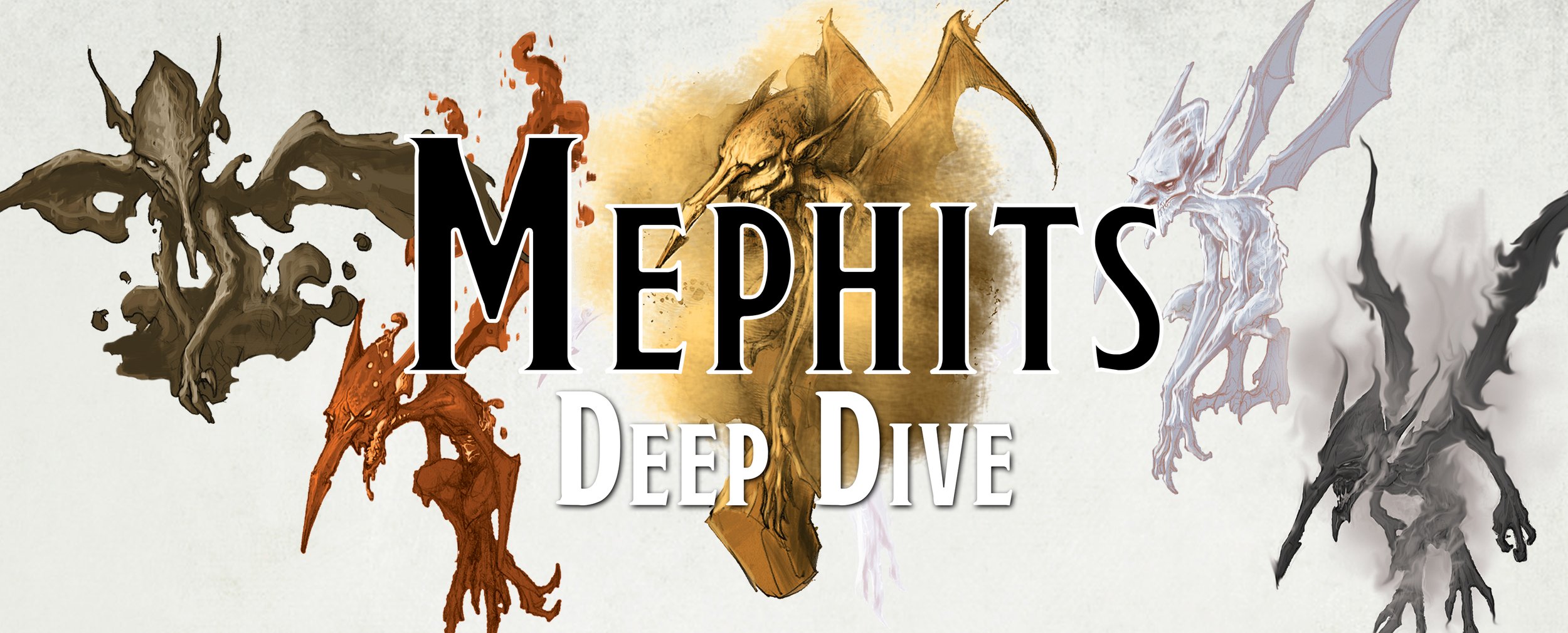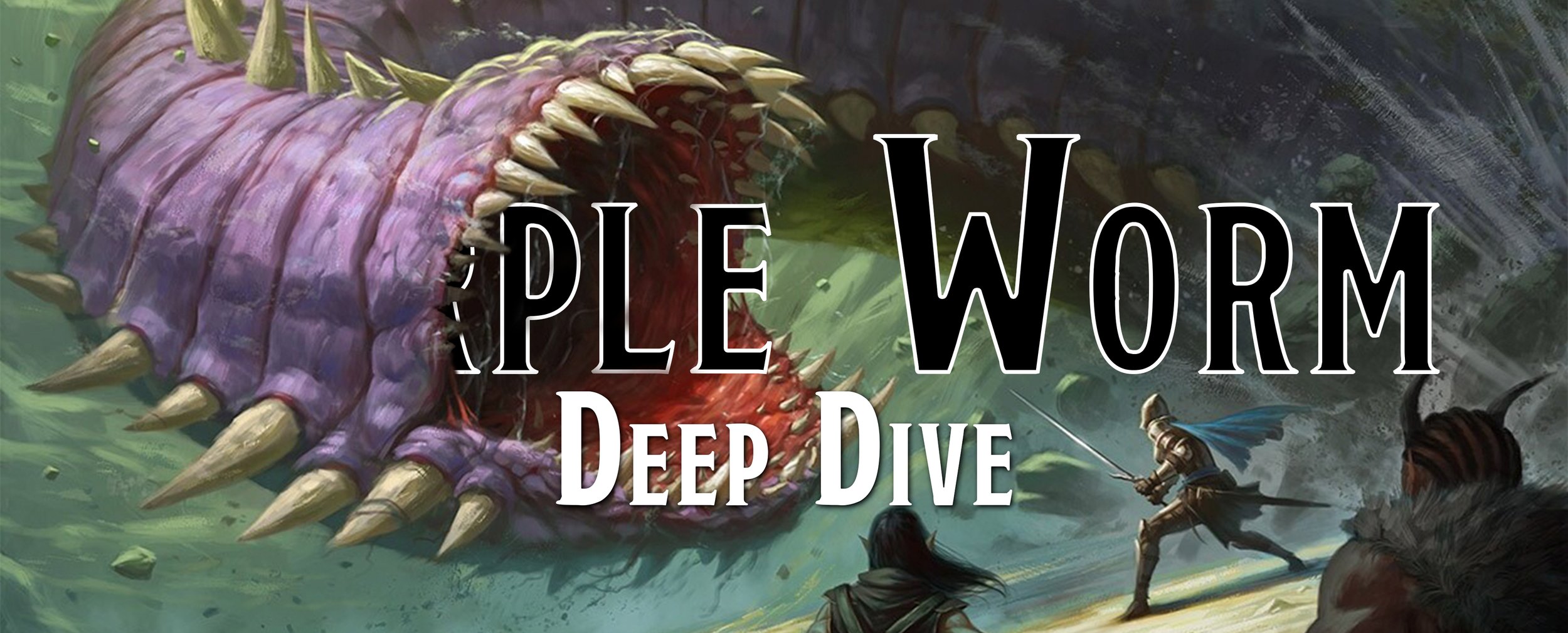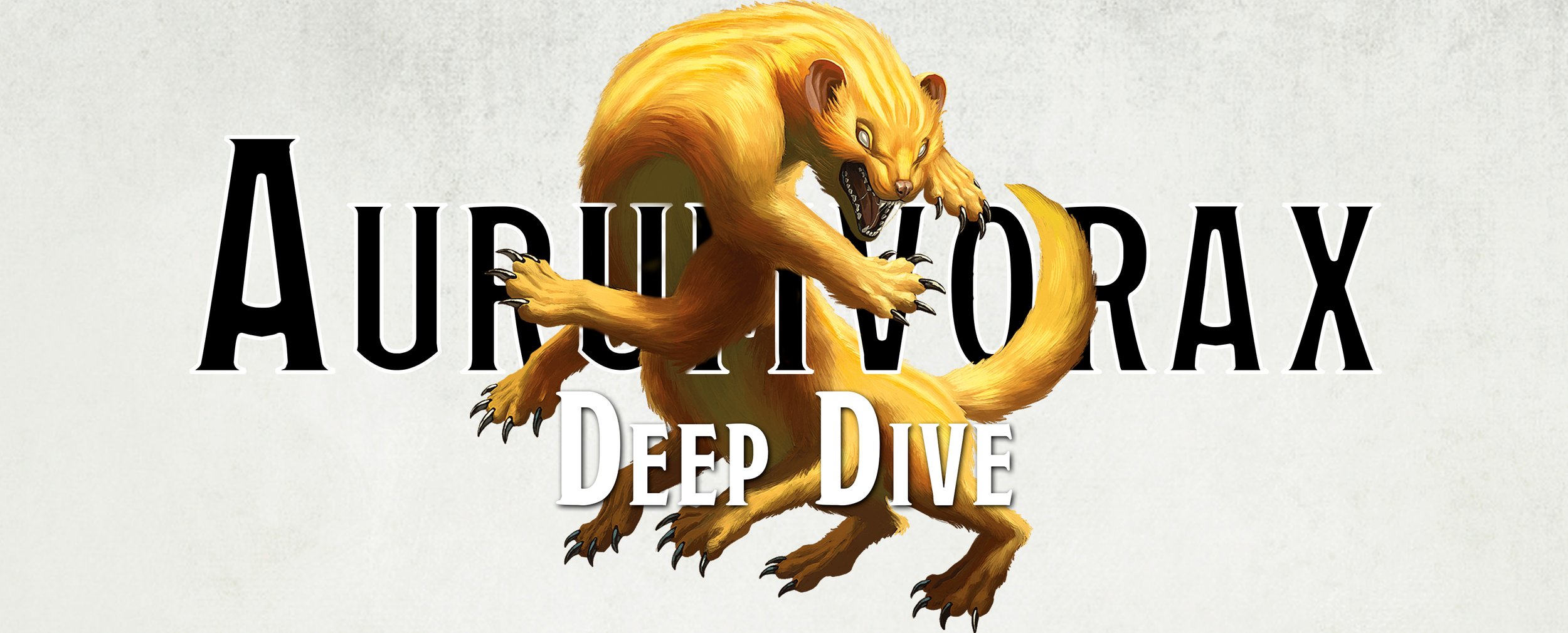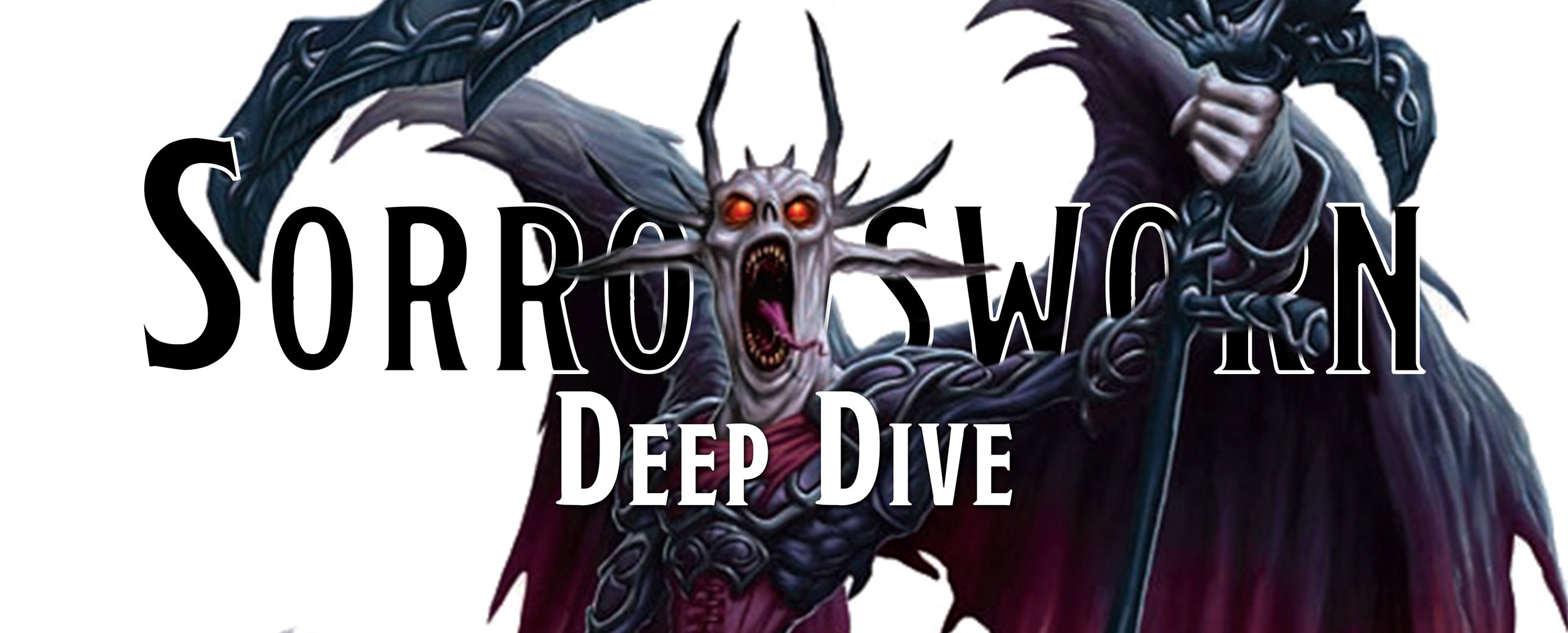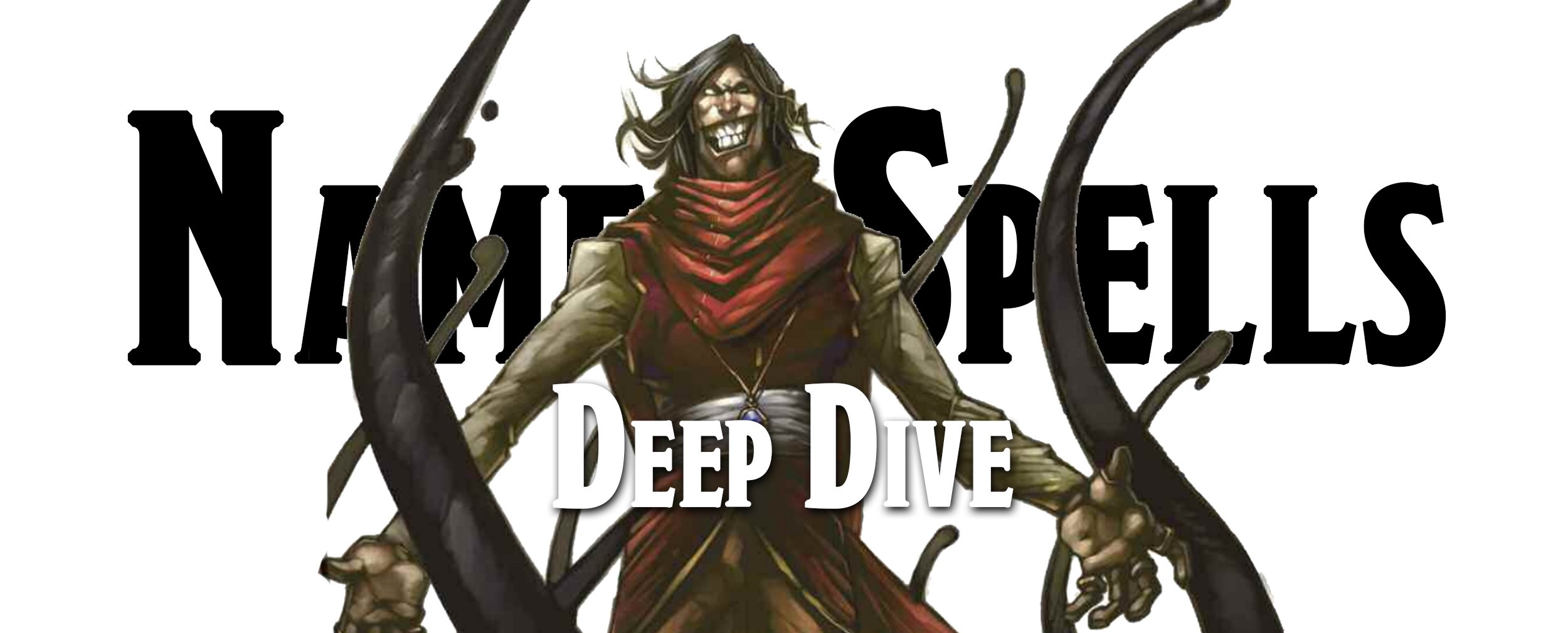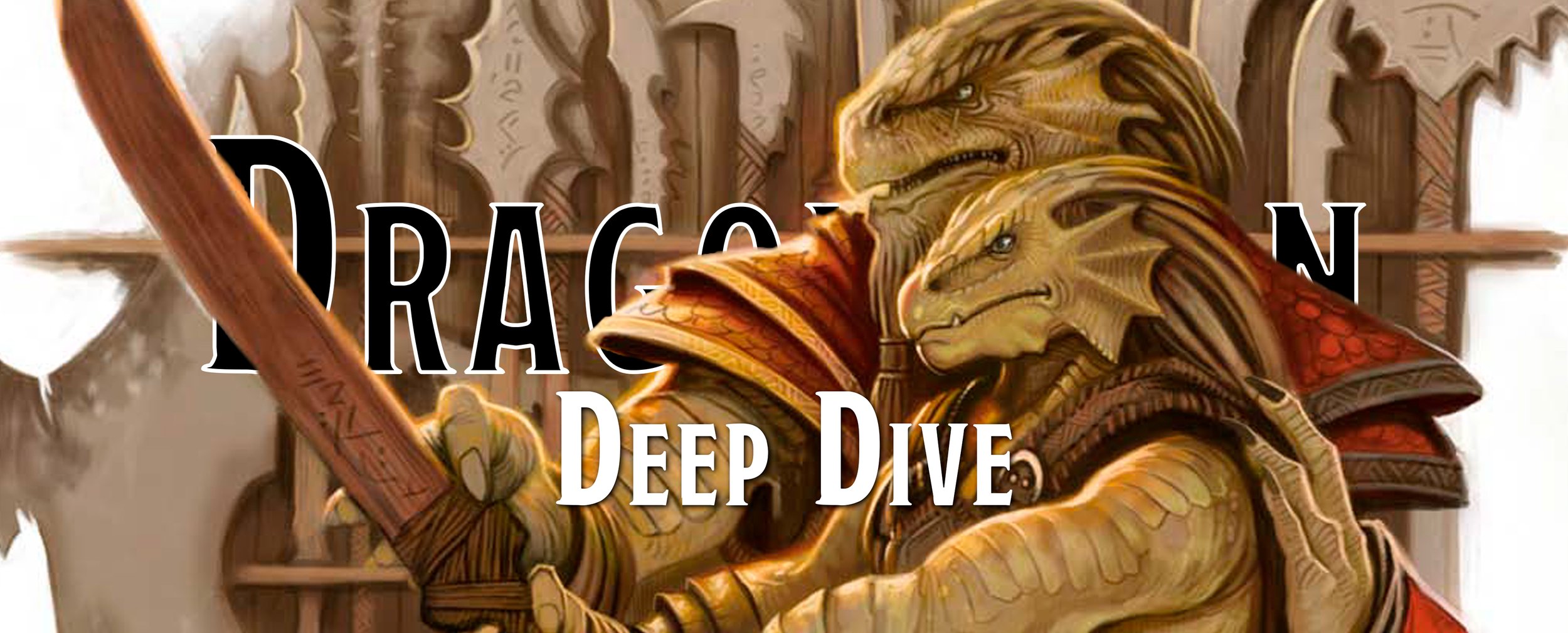Deep Dive - The Death Knight
The Death Knight has lived in the shadow of the lich for much of its existence, which is unfair to this powerful undead. No one in their right mind wants to encounter an unholy warrior who is dressed in black plate armor with gleaming red eyes that stare straight through to your soul. The Death Knight may not be given the same amount of love that the lich has over the editions, but it sure as hell has better art!
In another example of early Dungeons and Dragons borrowing from Tolkien, the early Death Knights are limited in number, which is reminiscent of the Nazgul, the dark knights who are the servants of Sauron. The Death Knights even look like them in many of the representations of the Nazgul - black armor, undead spirits, and power beyond mortals.
So let’s dive into the history of the Death Knight and see how they developed over the many editions.
AD&D - Death Knight
Frequency: Very Rare
No. Appearing: 1
Armor Class: 0
Move: Variable
Hit Dice: 9 (d10)
% in Lair: Nil
Treasure Type: Nil
No. of Attacks: 1
Damage/Attack: By weapon type
Special Attacks: See below
Special Defenses: See below
Magic Resistance: 75% (see below)
Intelligence: Average - Genius
Alignment: Chaotic Evil
Size: M
Psionic Ability: Nil
Level/X.P. Value: VIII/3,700+16 per hit point
Fiend Folio, 1981 TSR Inc.
The Death Knight was introduced in the Fiend Folio (1981) and it wastes no time to inform the reader that there are only twelve of these dreadful creatures in existence. They are thought to be a lich but created by a great demon prince, many think it is Demogorgon, the Prince of Demons. Each Death Knight is the result of a human paladin falling from grace and corrupted with dark powers.
A fallen paladin occurs when they fail to maintain strict adherence to the lawful good alignment and all that it entails. If a paladin decided to become a murder-hobo and slaughter young children and their mothers, they would fall, losing the ability to call themselves a paladin, and all the special abilities that come along with the class. Now, these paladins could redeem themselves through a number of various ways like going on quests or sacrificing themselves. One would assume that our twelve fallen paladin-lich-Death Knights decided to fully embrace their evil side and caught the eye of Demogorgon and they probably aren’t interested in redeeming themselves.
Monster Manual, 1977 TSR Inc. [Nightmare]
Like a paladin, these undead warriors have the ability to summon a mount, though being a cool ass Death Knight, they get a cool ass steed, the nightmare. These hell horses are considered to be fiends, with many being found on the plane of Gehenna, are black as night, have menacing red glowing eyes, flaming hooves and breathe dark smoke. The smoke, when breathed in battle, can blind the Death Knight’s opponent, allowing the Death Knight to get the upper hand. the nightmares also attack with their hooves, can bite, can fly, and can drift into the ethereal at will. Maybe this is why the paladins became a Death Knight, a nightmare is way cooler than a regular horse.
Sadly, this dive isn’t about the awesome and fearsome nightmare, so let’s go back to the Death Knight. Defensively, they have a lot going for them, starting with it is impossible to turn or dispel them. All undead, including liches, have the chance to be turned, so this makes the Death Knight an aberration amongst undead and will make cleric who is full of himself rethink his life choices. Of course, a cleric has more options than just turning away undead, they can attempt casting spells like one of the most powerful spells available to them, Holy (Unholy) Word which can slow down a Death Knight for a few rounds so that you can run away… Though, that brings us to the Death Knight’s next ability. They have 75% magic resistance, meaning that if you actually want to affect them with a spell you will need to roll percentile dice and get above a 75 in order to affect the Death Knight. Which… is bad for everyone in the party because if you happen to roll 11 or lower on that, the spell is then bounced back at your party. Say goodbye to your wizard when his fireball launches back at their face.
Finally, while the Death Knight may appear to be wearing only light armor, they always have an AC of 0, meaning a very high armor class for those who just count up for Armor Class. One weird thing about this is that the Death Knight’s movement is based on the armor they are wearing, but they have the same Amor Class no matter what they wear, but we suppose when your creator is the greatest demon in the entire world, who are we to argue.
You would think, with a name like the Death Knight, that they would be martial classes with big swords and fearsome reputations for stabbing people, but their swords are really secondary to the spells and magical abilities of the Death Knight. For all intents and purposes, the Death Knight functions as a 20th level magic-user and is constantly surrounded by a 5 ft radius of fear. The Death Knight has a variety of abilities that it can use anytime it wants, like wall of ice, detect magic, and detect invisibility. After that, the Death Knight can dispel magic and summon in demons twice a day, with a fairly good chance of summoning powerful demons to come to its aid. Once it's burned through its demon summons, the Death Knight also has the option of casting one of the power word spells, like power word kill, and shooting off a 20-dice fireball.
Monster Manual, 1977 TSR Inc. [Glabrezu]
Refocusing on the summoning demons part, let’s go into that to show how crazy this could get for a party. The Death Knight can cast the gate spell twice daily, and while there is only a 75% chance the gate will open, they have two tries at it every day. The highest percentage chance demon that will walk through a gate is a type III demon at 30%, stronger and weaker demons have their own smaller chances of being summoned in instead. In AD&D a demon type III is known as a glabrezu, and they come complete with 10 Hit Dice, an AC of -4, surrounded by 10 feet of darkness, and have the ability to cast fear, levitate, cause pyrotechnics, polymorph self, and telekinese at will. If that’s not enough, the glabrezu also has a 30% chance of summoning another demon I-III via the same gate spell, which it can also cast at will. Let’s not even get into what happens on that 5% chance the Death Knight has of summoning a type VI demon. It can get rough once the Death Knight starts calling in friends.
2e - Lich
Climate/Terrain: Any
Frequency: Very rare
Organization: Solitary
Activity Cycle: Any
Diet: Nil
Treasure: Nil
Intelligence: Supra Genius (19-20)
Alignment: Chaotic Evil
No. Appearing: 1
Armor Class: 0
Movement: 12
Hit Dice: 9 (d10)
THAC0: 11
No. of Attacks: 1 with +3 bonus
Damage/Attack: By weapon
Special Attacks: See below
Special Defenses: See below
Magic Resistance: 75% (see below)
Size: M (6’-7’ tall)
Morale: Fanatic (17)
XP Value: 6,000
Monstrous Compendium: Dragonlance Appendix, 1990 TSR Inc.
The Death Knight is first introduced in the Monstrous Compendium: Dragonlance Appendix (1990) and later is reprinted in the Monstrous Manual (1993) and doesn’t get any less frightening. We are also introduced to a Death Knight that is one of the most iconic bad guys in the history of Dungeons & Dragons, Lord Soth. We could write an entire article on Lord Soth that would rival the length of this one, but we are going to keep that condensed and talk a bit more on him later.
The biggest change for the Death Knight is that there are no longer just twelve of them walking around and doing their evil thing… which is probably a good thing so you can fight lots of them, but also a really bad thing because now you have to fight lots of them. Going along with that, there is now no mention of them being the servants of Demogorgon, the Prince of Demons, now they are simply warriors who were judged and cursed by the gods. The failure of the paladin, or a lawful good warrior, to follow its god’s code of honor leads to the possibility of becoming a Death Knight in the afterlife, which quite frankly is better than being sent to a few of the lower planes. Now, you might be wondering how bad do you have to be to get turned into a Death Knight? Everyone screws up, so why don’t the knights just repent and ask for a noble quest to go on for redemption? Well, spoilers… Lord Soth does just that, and it ends poorly for everyone involved. Such crimes that can lead to becoming a Death Knight include the slaughter of innocents, treason against one’s lord or god, and consistent failure to fight with honor on the battlefield. In death, the corrupted paladin takes the form of a giant undead knight, dressed in the armor it once wore in life, and with rotting flesh. Its head is a darkened skull with two red glowing eyes set deep into the eye sockets, and its deep voice strikes fear in the hearts of even the bravest of warriors.
Monstrous Manual, 1993 TSR Inc.
Even in death and the betrayal of all of its ideals, our fallen hero will still fight with some honor on the battlefield. Surprising an opponent and attacking them from behind is seen as a coward’s maneuver and they will wait until their opponent has their weapon drawn. Once on the battlefield, the Death Knight is fearless and fights with total abandon, which makes sense as they are already dead. Retreat is never an option, but it may seek to parlay if the opponent has crucial information about important people or objects to the Death Knight. Otherwise, the Death Knight’s raw hatred for the living has it fighting until its second death or its opponent dies… our bet is on its opponent dying.
Once a creature is cursed and becomes a Death Knight, they live a life of solitude and terror, and their menacing presence alone is reason to stay far, far away from them. The gods trap the Death Knight in their old castles or keeps, which they roam and defend against from any intruders. The curse also dooms the Death Knight to remember their horrific crimes whenever the moon is full, and if you live in a place like Krynn with three moons… that’s a lot of remembering. Oddly, this is done through songs, with the Death Knight singing about the horrible things they did in their deep, scary as hell voice. It’s said that the Death Knight will attack any creature that interferes with their song, even if they just happen to catch a word here or there. The whole thing is very strange, as the Death Knight will pretty much attack anyone whenever they see them, and who in their right mind would walk toward a haunting song of murder, betrayal, and despair sung by an undead knight dressed in black with glowing red eyes?
The attack and defensive abilities of the Death Knight stay the same from the previous edition, with the spells, effects, and weapons making it over from the earlier edition. The Death Knight, while a mighty badass with 18 Strength, is still just going to murder you with its spells. It’s actually a bit interesting because the lore states that they prefer using their sword, but the thing that makes a Death Knight dangerous is there spellcasting ability… so, maybe they get fed up when they can’t hit their enemies with their one sword attack per round and just launch their 20-dice fireball at the whole group.
Lord Soth
Knight of the Black Rose, 1991 Clyde Cadwell
One of the greatest villains of Dungeons & Dragons is Lord Soth, introduced in 1985 as a Death Knight working for Katriana and Takhisis, the goddess of control and evil. As stated above, there is a huge amount of information about him to do a separate Deep Dive, so we don’t want to go down the rabbit hole when talking about him. A very abbreviated history is that Lord Soth was a knight in the Order of the Rose, he was married, but he rescued an elven maiden named Isolde, took her as his lover, and she bore his child. Because love does crazy things to people, he had his wife murdered so he could be with Isolde, he was found out and chased back to his keep.
In an attempt to redeem Lord Soth, the gods gave him a great quest to save the world from a cataclysm…. Lord Soth then immediately fucked up by thinking Isolde was cheating on him after a few elf maidens poisoned his mind. He went back to the castle, accosted Isolde and then the cataclysm happened and Isolde was crushed by a burning chandelier.
Isolde pleaded with Lord Soth to save their child, who also happened to be burning in the chandelier wreckage, but Lord Soth didn’t want his son to grow up like him and refused to save either. Isolde then cursed him to live forever and suffer everyone’s death who will die today and then the keep is caught on fire and everyone dies, including Lord Soth, in the fire.
Lord Soth is then reborn as a Death Knight and stays in the ruins of his old castle. He eventually becomes the commander of Kitiara’s army and helps her to unleash the plans of Takhisis, the goddess of control and evil, and helped Kitiara secure a great artifact of power and later command her armies of undead. Eventually, this amount of evil couldn’t be contained to Krynn and Lord Soth is plucked from Krynn and brought to Ravenloft where he ruled over his domain known as Sithicus. Eventually, the mists of Ravenloft allowed his soul to leave the domain and return back to Krynn, though he still remained a Death Knight.
3e/3.5e Death Knight (Template)
7th level Fighter/3rd level Blackguard
Medium Size Undead
Initiative +5
HP 10d12 (65 hp)
Armor Class 26 (+1 Dex, +8 full plate, +2 enhancement, +5 natural), touch 11, flat-footed 25
Speed 20 ft. (Full plate mail)
Attacks: Touch +15 melee, or +3 greatsword +19/+14 melee, or heavy crossbow +11 ranged
Damage: Touch 1d8 plus 1 point Con, +3 greatsword 2d6+12/19-20, , heavy crossbow 1d10/19-20
Space/Reach: 5ft./5 ft.
Special Attacks: Abyssal blast, Constitution damage, fear aura 15 ft., smite good 1/day, command undead 3/day
Special Qualities: Aura of despair, dark blessing, detect good, DR 15/+1, immunities, poison use, SR 20, summon mount, undead followers, undead traits
Saves: Fort +8, Ref +4, Will +5
Abilities: Str 21, Dex 13, Con -, Int 10, Wis 14, Cha 10
Skills: Climb +3, Diplomacy +5, Handle Animal +3, Hide +1, Intimidate +4, Jump +3, Knowledge (religion) +2, Listen +3, Ride (horse) +6
Feats: Cleave, Dodge, great Cleave, Improved Initiative, Mobility, Power Attack, Sunder, Weapon Focus (greatsword), Weapon Specialization (greatsword)
Climate/Terrain: Any land or underground
Orgnization: Solitary or troupe
Challenge Rating: 13
Treasure: Double standard
Alignment: Usually lawful evil
Advancement: By character class
Dragon Magazine #360, 2007 WotC
The 3rd edition Death Knight template can be found in the Monster Manual II (2002) and not only does WotC relegate our undead warrior to the 2nd monster manual, but now any old evil character of 6th level or high can become one! While it’s neat that you could have lower level Death Knights be minor bosses… it does make the Death Knight a lot less special.
Death Knights are created through rituals by the gods of undeath with many making deals with those gods to help a would-be Death Knight learn the rituals to become an undead warrior. Death Knights have glowing orange eyes, constantly exude a fear aura, have a necrotic touch that drains the life force of others, and it's more than just paladins that can now be considered for a Death Knight. Barbarians, blackguards, fighters, rangers, fallen paladins, and more can all be horrible people who have broken promises and murdered a bunch of innocent people.
The abilities of a Death Knight undergo a dramatic change and while some of the basic items remain the same, the core abilities that have always made a Death Knight a fearsome undead creature are nowhere to be found. Instead, a Death Knight relies more on its original martial ability to help it excel in battle.
Dragon Magazine #360, 2007 WotC
Starting with what stays the same are it’s Hit Dice which are now d12s and that applies to all current and future HD. It is immune to a wide variety of effects, including cold, lighting, polymorph, and all effects that other undead are immune to. It still can’t be turned, but holy word now banishes it back to its god’s plane of existence. Death Knight can summon a nightmare as its steed, riding around on the flaming horse, though if its horse dies it has to wait a year and a day to get a new one, which is a weird restriction.
Becoming a Death Knight is a mystery for most people, luckily Dragon Magazine #350 (2007) comes along and provides a detailed article called Ecology of the Death Knight. Fun fact, this is the first digital only issue of the magazine. Every race has their own lore behind the creation of the Death Knights, elves see it as a tragic figure tricked by someone they loved, the dwarves know it as an old dwarven king who refused to die, humans tell of people wanting great power and doing what they had to receive it. It’s the halflings though that fits best with the previous editions as they incorporate Orcus, the Demon Prince of Undeath, into the story and describe knights of skill and ability thirsting for vengeance and that Orcus gave them the ritual to unlock undeath.
Due to the timing of this article, in 2007, this is nearing the end of 3rd edition and 4th edition would be arriving in a year. In this ecology, they talk about the differences in the Death Knight from conception by Charles Stross, who also created the githyanki, to the version of it presented in 3e. Because this is a blending of the editions, and this entire issue of Dragon Magazine is about the upcoming 4th edition, they go on to talk about what the Death Knight will become. Which brings us to the next bit of lore revealed in the article.
Death Knights are the martial version of a lich, but in order to stand out when compared to the lich, the Death Knight shouldn’t just be given a bunch of spells to make them more powerful, but rather they should use their martial ability to cut down their enemies and lead undead armies. Death Knights, similar to liches, must place their soul in an object, but unlike a lich, they place their soul in their weapon and use it to cut through their enemies. A Death Knight’s soul weapon is not a flimsy prison for their soul, like a lich’s phylactery, but rather a powerful weapon that, even if destroyed, doesn’t stop the Death Knight’s approach. The only way to kill a Death Knight is to destroy its body, thus sending its soul to be weighed by the gods unless the devils or demons take it first.
We are also given brief histories of some of the most famous Death Knights in Dungeons & Dragons, and a bit of pertinent information about each. Lord Soth, of course, is mentioned, telling the story of his unfaithfulness and murder of pretty much all his loved ones. Saint Kargoth could be found in the Greyhawk campaign setting, he was a noble knight who, overcome by jealousy and envy, approached Demogorgon to assist him in seeking revenge against perceived injustices. Miltiaes, while not specifically called a Death Knight, was an undead paladin from the Forgotten Realms setting. Miltiaes would anger Tyr, the god of law and order, by breaking the code of conduct on the battlefield, so he was cursed and henceforth became a Death Knight. The last one mentioned, Vanthus Vanderboren, went from human to half-fiend to Death Knight and finally ended up a larvae in the lower planes. Pretty big downfall for such a mighty warrior.
Dragon Magazine #360, 2007 WotC
4e - Death Knight
Medium natural humanoid (undead) / Level 17 Elite Soldier
Initiative 11
Senses Perception +8; darkvision
Marshal Undead aura 10; lower-level undead allies in the aura gain a +2 bonus to their attack rolls
HP 264 Bloodied 132; see also second wind
AC 35; Fortitude 32; Reflex 26; Will 27
Immune disease, poison; Resist 10 necrotic; Vulneraable 10 radiant
Saving Throws +2
Speed 5
Action Points 1
Soulsword (standard; at will) Necrotic, Weapon - +23 vs. AC; 1d8 +12 plus 5 necrotic damage (plus an extra 2d6 necrotic damage on a critical hit).
Containing Strike (standard; at will) Necrotic, Weapon - Requires soulsword; +23 vs. AA; 1d8+12 plus 5 necrotic damage, and the death knight can make a melee basic attack as an immediate interrupt against the target if the target shifts on its next turn.
Warrior’s Challenge (standard; encounter) Necrotic, Weapon - Requires soulsword; +23 vs. AC; 3d8+12 plus 5 necrotic damage, and the target is pushed 2 squares. All enemies within 2 squares of the target are marked until the end of the death knight’s next turn.
Unholy Flames (standard; recharge) Fire, Necrotic - Close burst 2; +19 vs. Reflex; 5d8+12 fire and necrotic damage to living creatures. Undead creatures within the burst (including the death knight) deal and extra 2d6 fire damage with melee attack until the end of the death knight’s next turn.
Combat Challenge - Every time the death knight attack an enemy, whether that attack hits or misses, the death knight can mark the target. The mark lasts until the end of the death knight’s next turn. In addition, whenever an adjacent enemy shifts, the death knight makes a basic melee attack against that enemy (as an immediate interrupt).
Second Wind (standard; encounter) Healing - The death knight spends a healing surge and regains 66 hit points. The death knight gains a +2 bonus to all defenses until the start of its next turn.
Alignment Evil Languages Common
Str 20 (+13) Dex 12 (+9) Wis 11 (+8) Con 18 (+12) Int 13 (+9) Cha 14 (+10)
Equipment plate armor, light shield, soulsword (longsword)
Monster Manual, 2008 WotC
The 4th edition Death Knight can be found in the Monster Manual (2008) and this incarnation of our skeletal warrior moves even farther away from the Death Knight of old, relying on new martial abilities, which is in line with the early Dragon Magazine about the changes to the Death Knight and how they should be distinct from a lich. Before we get too into it, we would like to point out that the artwork for 4e, which is the same as in 3e, is just… ugly. A green skinned armored warrior? Really? It doesn’t look very imposing, and we can’t find it in our heart to be scared of what looks like a scrawny zombie in spray-painted black armor.
The biggest change to the Death Knight is the introduction of the soulsword. Upon finishing the ritual to become a Death Knight, their soul binds into the weapon. The sword is granted its magical powers from the fact that the knight’s soul is contained within it, and looking at the stat block, these abilities are quite impressive. While a lich uses a phylactery to protect its soul from being discovered and destroyed, a Death Knight has no fear since its soul provides the knight with their power. The sword can only able to be used by the Death Knight, and the evil of the soul contained within causes any other wielder to feel such despair and hopelessness, that they cannot hold it for very long. If the Death Knight loses its sword, they become weakened, but, and this is just conjecture on our part, also enraged by the fact that someone has stolen its soul and sword. It will hunt down the offender with the unending terror of undeath, overcome by the need to get the sword and therefore its soul back.
The Death Knight has little in the way of special, magical abilities, but rather focuses on using tactics and special martial abilities to win the day. They can strike out at their enemies when they try to move away, they can mark their opponents so that they have a penalty when attacking someone else, they can knock creatures back, and other martial abilities. But that isn’t all for our Death Knight as they also have a few more magically inclined abilities granted to them by their undeath, because their soul is currently in their sword when they strike out with it, it is crackling with necrotic energy. The Death Knight can also burst in unholy energy dealing fire and necrotic damage to its enemies while all undead creatures can deal additional fire damage on their attacks.
The Death Knight is a creature designed to be around minions and uses its abilities to help out its minions. Death Knights, due to their undeath, prefer undead creatures to lead but they dislike the unintelligent undead like zombies. Instead, Death Knights prefer leading armies of wights, sword wraiths, ghouls, and other undead that have some intelligent thoughts. Though, that doesn’t mean that a Death Knight won’t lead an army of skeletons as they go about destroying the countryside.
5e - Death Knight
Medium undead, Chaotic evil
Armor Class 20 (plate, shield)
Hit Points 180 (19d8 + 95)
Speed 30 ft.
Str 20 (+5) | Dex 11 (+0) | Con 20 (+5), | Int 12 (+1) | Wis 16 (+3) | Cha 18 (+4)
Saving Throws Dex +6, Wis +9, Cha +10
Damage Immunities necrotic, poison
Condition Immunities exhaustion, frightened, poisoned
Senses darkvision 120ft., passive Perception 13
Languages Abyssal, Common
Challenge 17 (18,000 XP)
Magic Resistance. The death knight has advantage on saving throws against spells ad other magical effects.
Marshal Undead. Unless the death knight is incapacitated, it and undead creatures of its choice within 60 feet of it have advantage on saving throws against features that turn undead..
Spellcasting. The death knight is a 19th level spellcaster. Its spellcasting ability is Charisma (spell save DC 18, +10 to hit with spell attacks). It has the following paladin spells prepared:
1st level (4 slots) command, compelled duel, searing smite
2nd level (3 slots) hold person, magic weapon
3rd level (3 slots) dispel magic elemental weapon
4th level (3 slots) banishment, staggering smite
5th level (2 slots) destructive wave (necrotic)
Multiattack. The death knight makes 3 longsword attacks.
Longsword. Melee Weapon Attack: +11 to hit, reach 5ft., one target. Hit: 9 (1d8+5) slashing damage, or 10 (1d10+5) slashing damage if used with two hands, plus 18 (4d8) necrotic damage.
Hellfire Orb (1/Day). The death knight hurls a magical ball of fire that explodes at a point it can see within 120feet of it. Each creature in aa 20 foot radius sphere centered on that point must make a DC 18 Dexterity saving throw. The sphere spreads around corners. A creature take 35 (10d6) fire damage and 35 (10d6) necrotic damage on a failed save, or half as much damage on a successful save.
Parry. The death knight adds 6 to its AC against one melee attack that would hit it. To do so, the death knight must see the attacker’s and be wielding a melee weapon.
Monster Manual, 2014 WotC
The Death Knights arrives in 5th edition in the Monster Manual (2014) and in this version, the creators combine elements of almost every edition. Some of the abilities are given new names, but they are reminiscent of powers going all the way back to AD&D and up through 4th edition. Also, let’s take a moment to appreciate the art and the callback in the armor design based off of Lord Soth’s armor in Dragonlance.
The first thing we are going to go over is that now, Death Knights draw all of their abilities from an eldritch power that fuels their ability to cast spells and attract legions of undead followers. The Death Knight regains their spellcasting ability, which might be seen as being close to the lich but that might be a more personal issue, and these spells return an immense source of power for the Death Knight. They are now a 19th level caster and gain the use of paladin spells, which plays into the old idea that a Death Knight was a fallen paladin, not some random low-level ranger or barbarian. Most of their spells provide the Death Knight with more offensive firepower for their melee attacks, like casting a smite on their weapon and crippling their opponents, so it is still very martial in focus.
Drawing from 4th edition, the Death Knight remains a knight, a valiant warrior who has fallen from grace, and who then leads a life of selfishness and evil, and ultimately upon their death is cursed. A new portion of this lore though is that the Death Knight can be redeemed but only if the Death Knight atones for the sins committed in his mortal life, this would allow them to finally die and rest in peace. Never before has this been mentioned, as a Death Knight was doomed to walk the earth as an undead creature until they are killed, which makes you wonder if these Death Knights even want to be redeemed. Many who become a Death Knight do it to escape death and their souls going on to its eternal rest.
One new ability that the Death Knight gains, that is only sort-of in previous editions, is the Hellfire Orb. Once a day they can throw a ball of magic fire at its enemies that explode in a 20ft radius sphere. If you think this sounds awfully like the fireball spell, you’re right. The difference between this orb of exploding evil and fireball is that the Hellfire Orb does fire and necrotic damage. Both the fire and necrotic damage do 10d6 damage each, which matches 20d6 the fireball did when cast by the Death Knight in the earlier editions. It’s nice to see their 20-dice fireball made it in a new form, as it can be a big ‘screw you’ attack when it is losing the battle… or maybe it’s just bored and thought it’d be funny to watch everyone go down screaming in hellfire.
The description of the Death Knight goes on to state that Death Knights can attract undead and even minor friends, though no clear mention of exactly how that works, which is a rare instance. Normally, its the older editions that omit specific information to allow the DM to decide and in later editions it becomes more and more specific, but not here! Nope, the Death Knight just has the ability to attract them, and that’s all it is going to say. In our personal opinion, the Death Knight can attract an undead tarrasque.
Which brings us to the mounts, and we wished that we could say that an undead tarrasque was a mount choice, but no… it isn’t, maybe 6th edition. Instead, the Death Knight will ride around on a skeletal warhorse or a nightmare. Again, no clear specifics on how they get it, but at least a Death Knight doesn’t go around for a year and a day without a mount if it dies in battle!
These powerful undead warriors creatures rival the lich in many ways, and while the lich can come back over and over again, the Death Knight dies when it’s physical body is killed. Though, that requires you to actually kill them which is another story altogether. They are well rounded with powerful spells, abilities, and they can rival even some of the strongest warriors. They also get to ride in on a black as night horse who’s hooves are on fire and breathing smoke… so that’s pretty cool too.
Got something you’d like to see a Deep Dive on?
Let us know in the comments below!
If you enjoy our Deep Dive series consider
supporting us on Patreon and following us on Twitter!



![Monster Manual, 1977 TSR Inc. [Nightmare]](https://images.squarespace-cdn.com/content/v1/5bd88db093a6320f071b1a50/1582138197829-4K4NJSKJ98091RRITQW8/Nightmare.jpg)
![Monster Manual, 1977 TSR Inc. [Glabrezu]](https://images.squarespace-cdn.com/content/v1/5bd88db093a6320f071b1a50/1582137946134-FGF0QTUEEIWMGTOIA7PY/Glabrezu_MM_1e.png)




























